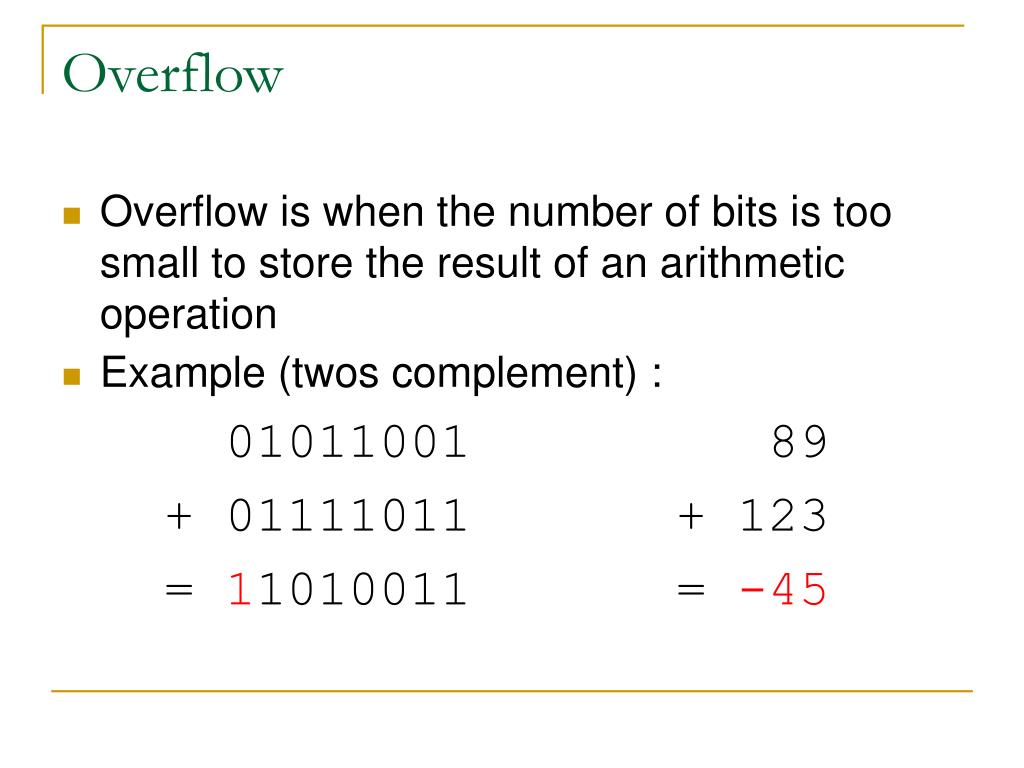
#Example of overflow error pro
The Flippy Do Pro is still using 8 bits to represent a number.When using the Flippy Do Pro, the numbers on the left-hand side of the line are whole numbers and those on the right-hand side of the line are fractional numbers.But this time, the Flippy Do Pro is already filled with binary place values assigned in a different way - they include fractions. The Flippy Do Pro is similar to the one you made before.Fill out all the numbers if they are not already done. Provide each group with a copy of the Flippy Do Pro Template and scissors.ĭo This: Cut and fold your Flippy Do Pro following the guidance on the slide. What happens when there aren't enough place values to represent a number? You will explore this with a new version of the Flippy Do, the Flippy Do Pro! Now that you have started thinking about place value and overflow, we are going to work on a different problem.

What about when the odometer reaches the max value? What happens if we keep driving? Flippy Do Pro The number in the odometer keeps going up as we drive. They will consider an odometer to explore what happens when you add one to the largest number you can represent in a number system. Students will tackle the problem of "running out of place values" when counting to bigger and bigger numbers. You also can't give someone $1.25 in change (because you have no nickels!)Īt both extremes of the number range, large and small - and in between numbers - you are unable to build some numbers because you don't have the place values to do so.

Students discover the limitations of creating numbers that are "too big" or "too small" to count. This lesson introduces students to the practical aspects of using a binary system to represent numbers in a computing device. Understand that overflow and roundoff errors result from real-world limitations in representing place value.
#Example of overflow error how to


Students extend their understanding of the binary number system by exploring errors that result from overflow and rounding.


 0 kommentar(er)
0 kommentar(er)
